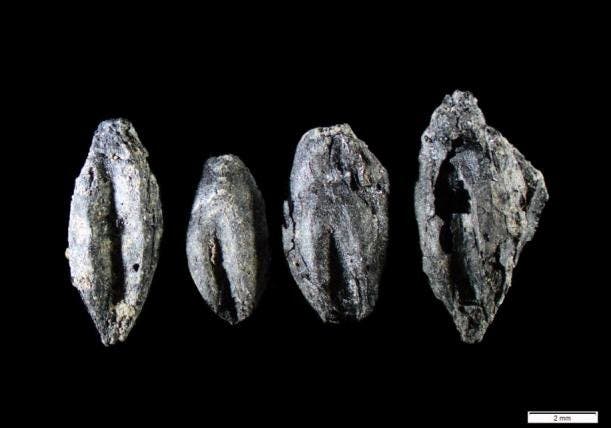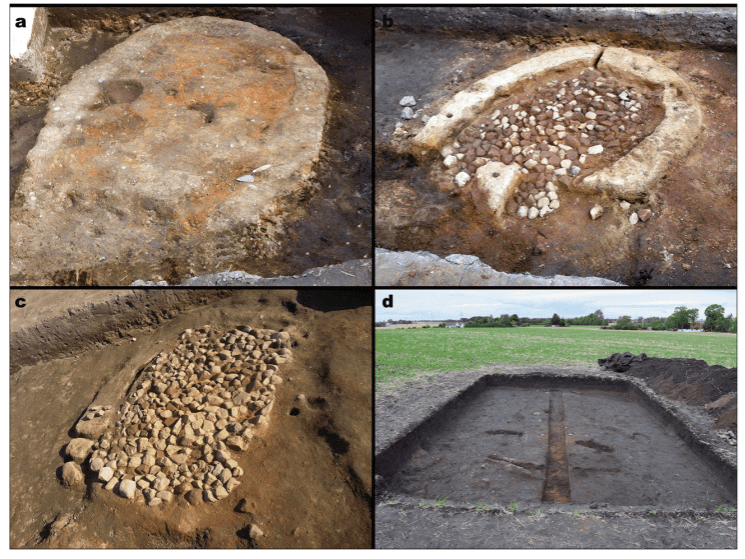New evidence shows that Swedes were producing beer on an industrial scale even since the Iron Age.

Image credits M. Larsson, A. Svensson, J. Apel, 2018, Archaeological and Anthropological Sciences.
Humans have had a very long relationship with beer. Legal documents and images recovered by archaeologists show that people in Mesopotamia produced the brew as early as 4000 BCE. There is also evidence of beer-making in China around 3000 BCE. Beer seems to have played an important part in these ancient cultures and economies, and it’s possible that the earliest permanent settlements were founded just so we could grow more grains and make more beer.
New findings from the Lund University, Sweeden, shows that northerners were also joining in the fun as early as the Iron Age.
Let there be ale!
Archaeologists from Lund report finding the carbonized remains of germinated grains in Uppåkra, southern Sweden. The findings show that malting processes were carried out here as early as the Iron Age — and where there’s malt, there’s beer. The scale of the operation and its position in the settlement indicates an industrial-level approach to brewing.
“We found carbonised malt in an area with low-temperature ovens located in a separate part of the settlement. The findings are from the 400-600s, making them one of the earliest evidence of beer brewing in Sweden,” says first author Mikael Larsson, who specialises in archaeobotany, the archaeology of human-plant interactions.
Finding cereals on archaeological sites is far from uncommon. However, there’s rarely any way to link these grains to certain processes, meaning we can’t tell what the people of old were planning to do with the seeds. The particularities of the malting process, however, allowed the team to identify the intended purpose of these grains.
It takes two key processes to brew beer. The first, malting, requires wetting grain with water to induce germination. During the process of germination, enzymes in the seeds break down proteins and starches into sugars. After enough sugar is formed, the second part of the process begins: the grains are dried in an oven to halt germination. The charring on the seeds discovered in Uppåkra, as well as the presence of ovens in the area, suggests that the grains were involved in this drying process.

Image credits M. Larsson, A. Svensson, J. Apel, 2018, Archaeological and Anthropological Sciences.
Uppåkra is currently the largest Iron Age settlements in southern Scandinavia. From 100s BCE to the 1000s CE, it was a densely populated political and religious center. Imported luxuries such as jewelry and glass bowls were found in impressive quantities in the settlement, suggesting that it was an important and rich trading center. It’s not far-fetched, then, to assume that a local brewing industry might have thrived here — and evidence on the ground also supports this.
“Because the investigated oven and carbonised grain was situated in an area on the site with several similar ovens, but absent of remains to indicate a living quarter, it is likely that large-scale production of malt was allocated to a specific area on the settlement, intended for feasting and/or trading,” explains Mikael Larsson.
We’ve previously only found evidence of beer brewing in the Nordic region in two other places: one location in Denmark from around 100 CE, and one in Eketorp on Öland from around 500 CE. This would make the present findings the earliest evidence of beer production in the area.
The paper “Botanical evidence of malt for beer production in fifth–seventh century Uppåkra, Sweden” has been published in the journal Archaeological and Anthropological Sciences.






